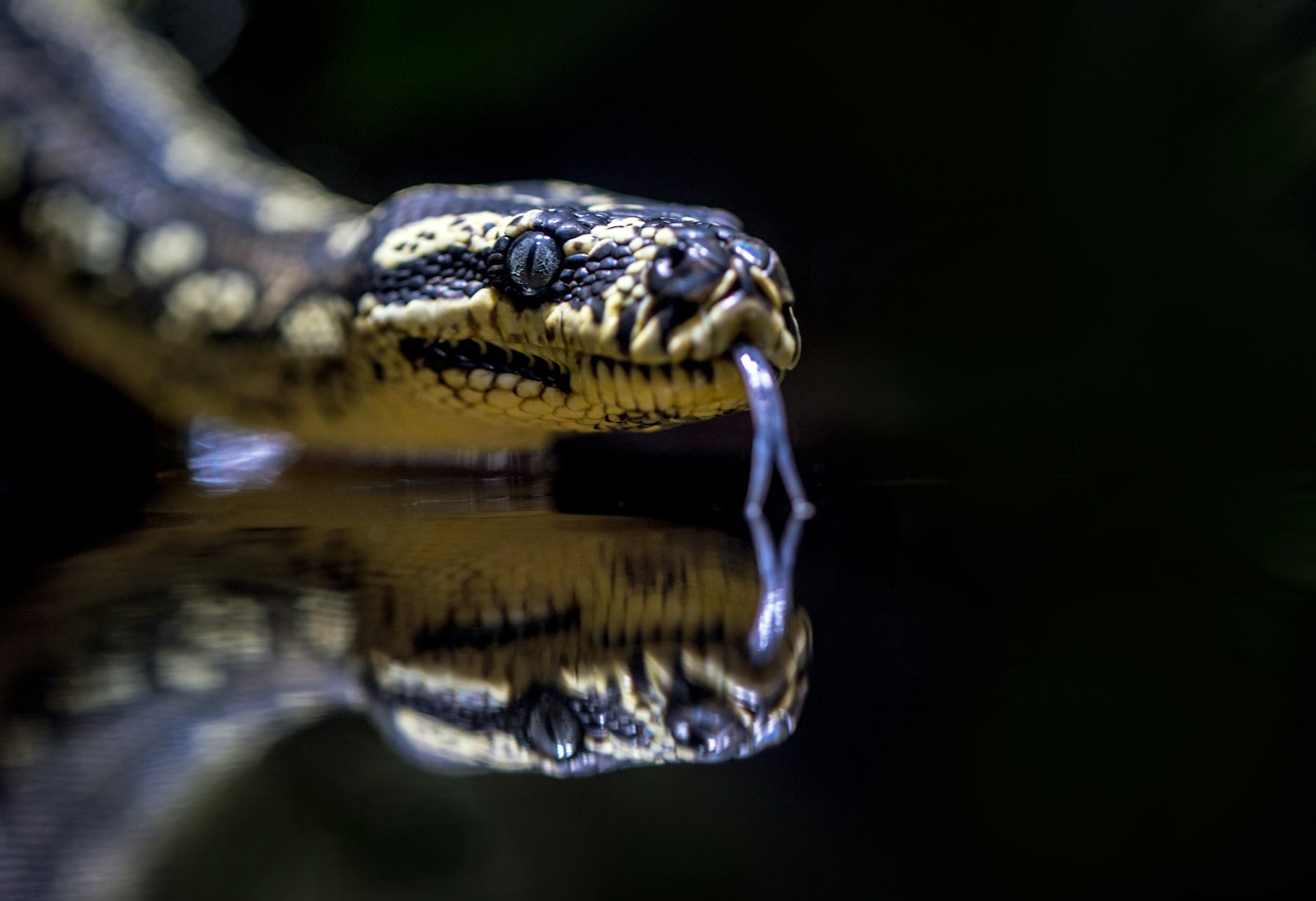When we think of snakes, one of the most distinctive features that comes to mind is their curious, flicking forked tongues. This unusual anatomical trait has fascinated scientists and nature enthusiasts for centuries. Unlike the single-lobed tongues of most animals, snake tongues split into two distinct tips, creating their characteristic fork shape. This isn’t just a biological oddity—it’s a sophisticated sensory tool that has evolved over millions of years to help these remarkable reptiles survive and thrive in their environments. The forked tongue represents one of nature’s most elegant solutions to the challenge of gathering critical information about the world, allowing snakes to navigate, hunt, and avoid dangers with remarkable precision despite their lack of limbs and relatively limited vision.
The Basic Anatomy of a Snake’s Forked Tongue

A snake’s tongue is a marvel of biological engineering, specially designed for its unique function. The fork typically begins about halfway down the length of the tongue, dividing into two slender tips called tines. These tines are extremely flexible and can move somewhat independently of each other. The tongue itself contains no taste buds, unlike human tongues, and is instead covered with a moist, keratinized surface that helps collect chemical particles from the environment. Most snake species can extend their tongues tremendous distances outside their mouths—often several times the length of their head—without opening their jaws fully, thanks to a specialized notch in their lips called the rostral groove. When not in use, the tongue retracts into a sheath in the bottom of the mouth, protecting this delicate sensory organ.
The Vomeronasal System: The Key to Understanding
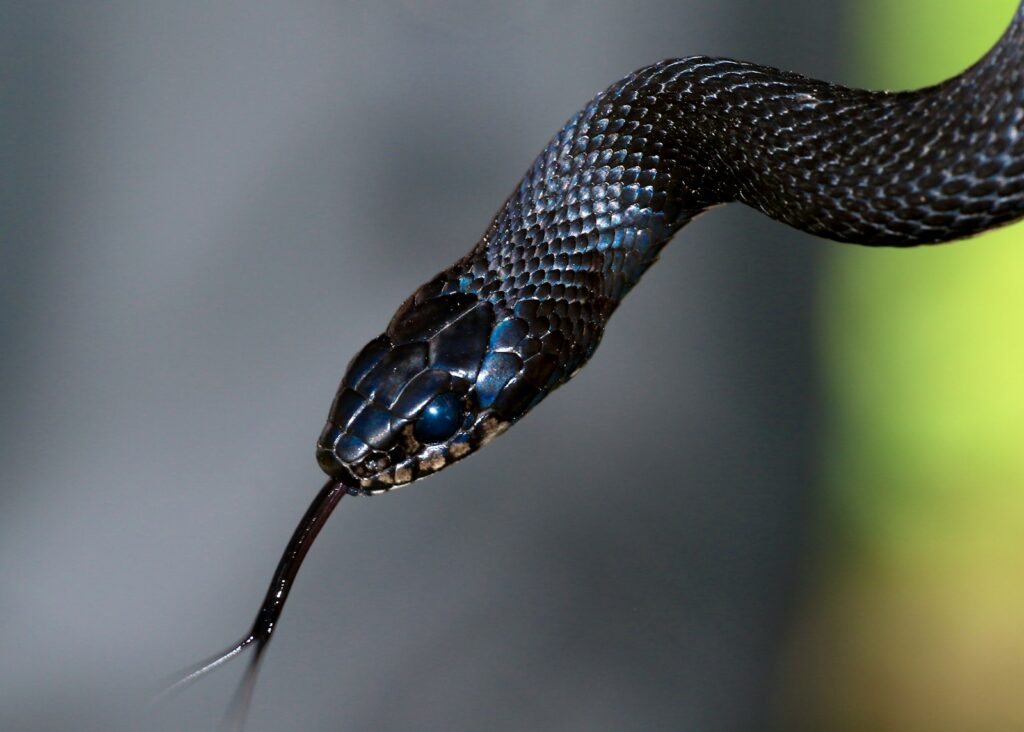
The forked tongue works in conjunction with a specialized sensory system called the vomeronasal or Jacobson’s organ. Located in the roof of a snake’s mouth, this remarkable organ consists of two small fluid-filled sacs with sensitive receptor cells that detect chemical molecules. When a snake flicks its tongue, it collects chemical particles from the air, ground, and water. After sampling the environment, the tongue retracts and the tips are inserted into two small openings in the roof of the mouth, delivering these chemical samples directly to the vomeronasal organ. This system is completely separate from a snake’s sense of smell, functioning as a sophisticated chemosensory detection system that provides detailed information about the snake’s surroundings. The vomeronasal system is so sensitive that it can detect chemical concentrations as low as a few parts per billion.
Stereo Chemoreception: Nature’s GPS System
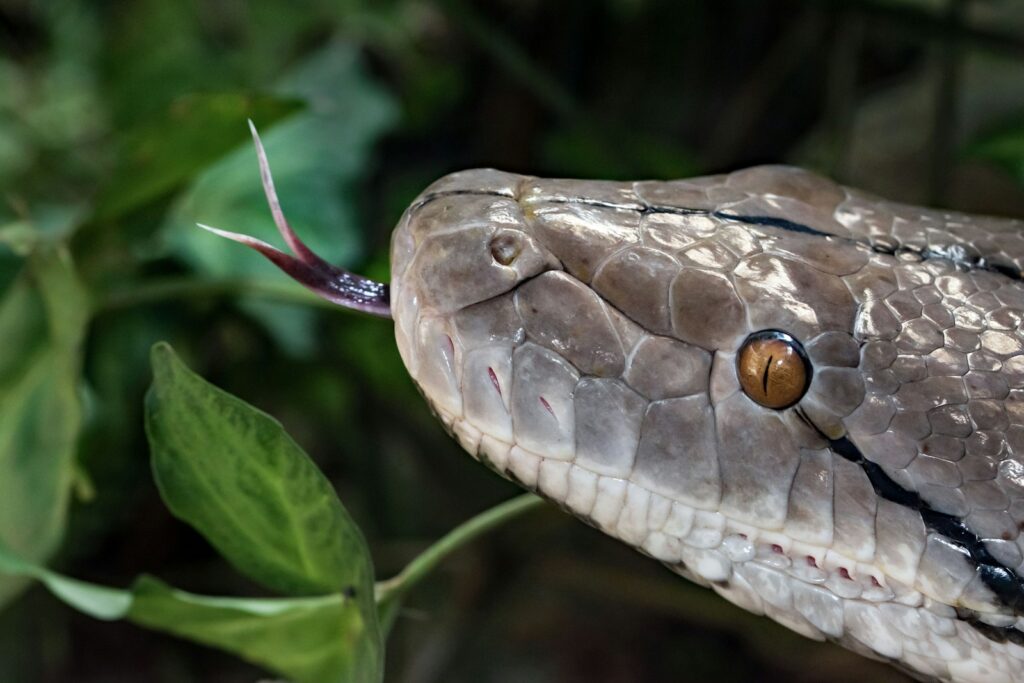
The fork in a snake’s tongue is not merely decorative—it serves a critical function in what scientists call “stereo chemoreception.” Much like how our two ears help us determine the direction of sounds, the two tines of a snake’s tongue collect chemical information from slightly different spatial locations. When the tongue flicks, the fork opens widely, with the tips spread apart to sample chemicals from two separate areas simultaneously. This creates a chemical concentration gradient that the snake’s brain interprets to determine the direction of a scent’s source. For example, if prey chemicals are more concentrated on the right tine, the snake knows to move in that direction. This remarkable adaptation allows snakes to follow chemical trails with astonishing precision, essentially creating a three-dimensional chemical map of their environment without relying on vision.
The Evolutionary History of Forked Tongues
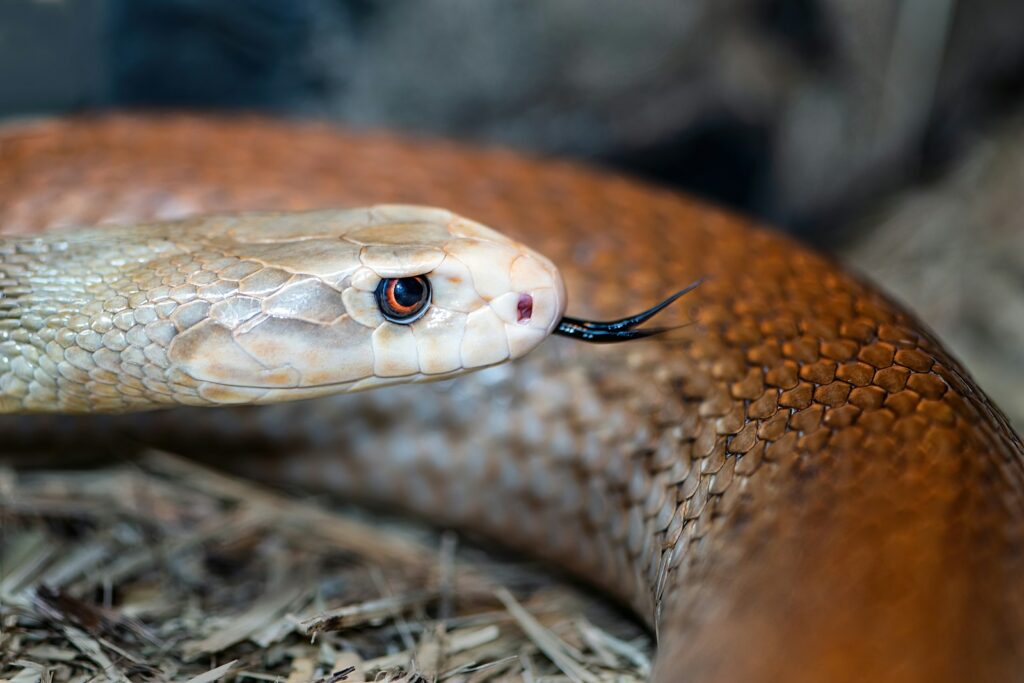
The forked tongue didn’t appear overnight in evolutionary history but developed gradually over millions of years. Paleontological evidence suggests that the earliest snake ancestors, which evolved from lizard-like reptiles approximately 100-150 million years ago, already possessed slightly notched tongues. The full fork seen in modern snakes represents the culmination of a long evolutionary process that refined this sensory tool. Interestingly, forked tongues also evolved independently in monitor lizards and some teiid lizards, a classic example of convergent evolution where similar traits develop separately in unrelated lineages due to similar selective pressures. The fact that this trait evolved multiple times in different reptile groups underscores its tremendous survival value. Fossil evidence shows that the tongue fork became progressively more pronounced as snakes evolved into the agile, limbless predators we recognize today.
How Snakes Use Their Tongues for Hunting

The forked tongue is perhaps most crucially employed during hunting, where it gives snakes a remarkable advantage in locating and tracking prey. When a snake detects prey chemicals in its environment, it will increase its tongue-flicking rate dramatically, sometimes flicking several times per second to continuously update its information about the prey’s location. The tongue allows snakes to follow prey trails that may be hours or even days old, picking up microscopic particles shed by potential meals. For ambush predators like vipers, the tongue provides crucial information about when prey is approaching without the snake having to move and potentially reveal its location. Even after striking, many snakes will continue rapid tongue-flicking to track prey that escapes the initial attack, allowing them to follow injured animals that might die some distance away.
Forked Tongues and Mate Selection
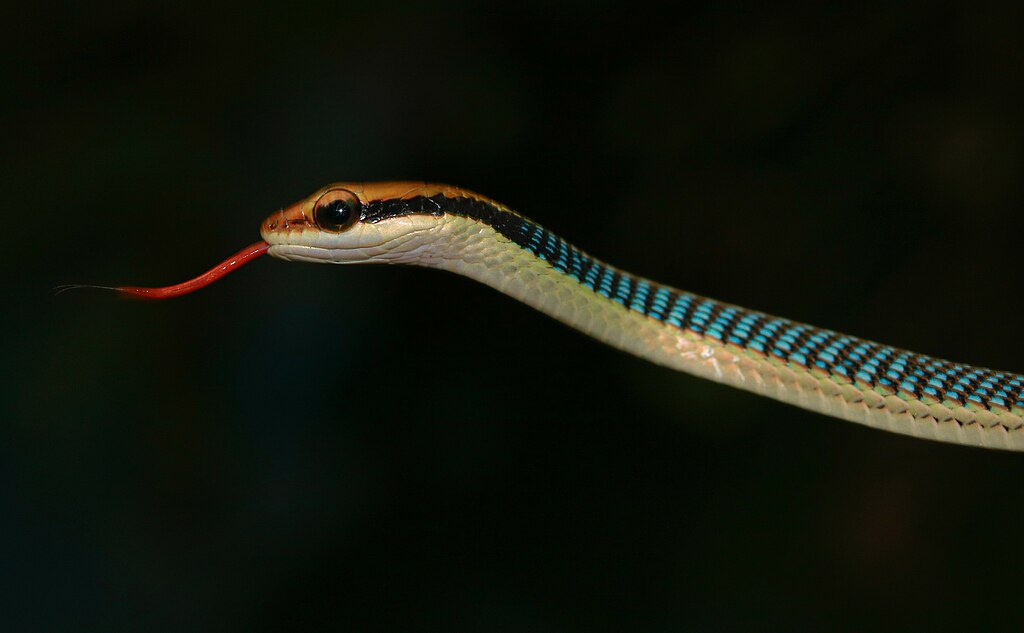
Beyond hunting, the forked tongue plays a vital role in snake reproduction and social behavior. During breeding season, male snakes use their tongues to detect pheromones released by receptive females, sometimes tracking a potential mate across considerable distances. The tongue-vomeronasal system is sensitive enough to distinguish between different individual snakes, allowing males to determine if a female is reproductively ready and to avoid wasting energy pursuing non-receptive mates. Some research suggests that snakes can even use their chemosensory abilities to avoid inbreeding by detecting genetic relatedness through chemical cues. For species that engage in complex mating behaviors, such as garter snakes that form mating balls with dozens of males competing for a single female, the tongue provides crucial information in the chaotic environment of a breeding aggregation.
Predator Avoidance Through Chemical Detection

The forked tongue serves as an early-warning system for detecting potential predators long before they come into visual range. Snakes use their tongues to detect chemical traces of known predators such as hawks, mongooses, or larger snakes, allowing them to take evasive action before an encounter occurs. These chemical signatures can persist in the environment for extended periods, giving snakes information about which predators have recently passed through their territory. Some research indicates that snakes can even distinguish between different predator species and adjust their escape strategies accordingly. For example, a snake might flee rapidly from the scent of a mongoose but freeze in response to bird predator cues, demonstrating the sophisticated information-processing capabilities linked to their forked tongues.
Tongue Flicking Patterns and Behavior
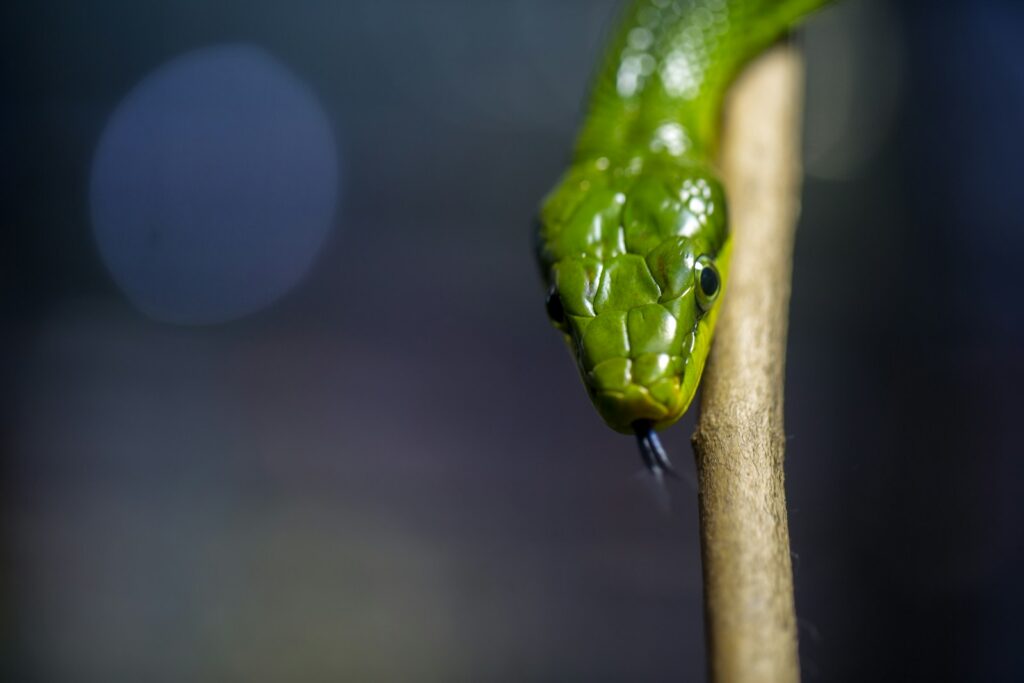
Scientists studying snake behavior have documented distinct patterns in how snakes use their tongues in different situations. When exploring new territory, snakes typically employ a slow, regular tongue-flicking pattern that allows them to build a general chemical picture of their environment. In contrast, when following a specific trail or responding to novel stimuli, the tongue-flick rate increases dramatically and becomes more directed. The physical pattern of tongue movement also changes according to the snake’s needs—wide, sweeping motions when broadly sampling the environment versus targeted, precise movements when homing in on a specific chemical source. Some species even customize their tongue-flicking behavior for different environments; for instance, aquatic snakes use specialized underwater tongue-flicking techniques that differ from those employed on land to compensate for how chemicals disperse differently in water.
Variations Among Different Snake Species

While all snakes have forked tongues, the specific characteristics of the fork vary substantially between species and often reflect their ecological niche. Fast-moving active hunters like racers and whipsnakes typically have longer, more deeply forked tongues that maximize their ability to track prey over long distances. In contrast, ambush predators like pythons and vipers often have slightly shorter tongues with less pronounced forks, as they rely less on active tracking. Highly specialized aquatic snakes have evolved tongues adapted for water, with particular shapes that work efficiently in that medium. Perhaps most dramatically, the egg-eating snake possesses an unusually shallow fork, which may relate to its specialized diet that doesn’t require the same level of prey-tracking ability. These variations demonstrate how natural selection has fine-tuned this sensory organ for each species’ particular lifestyle.
The Science of Tongue Flicking Mechanics
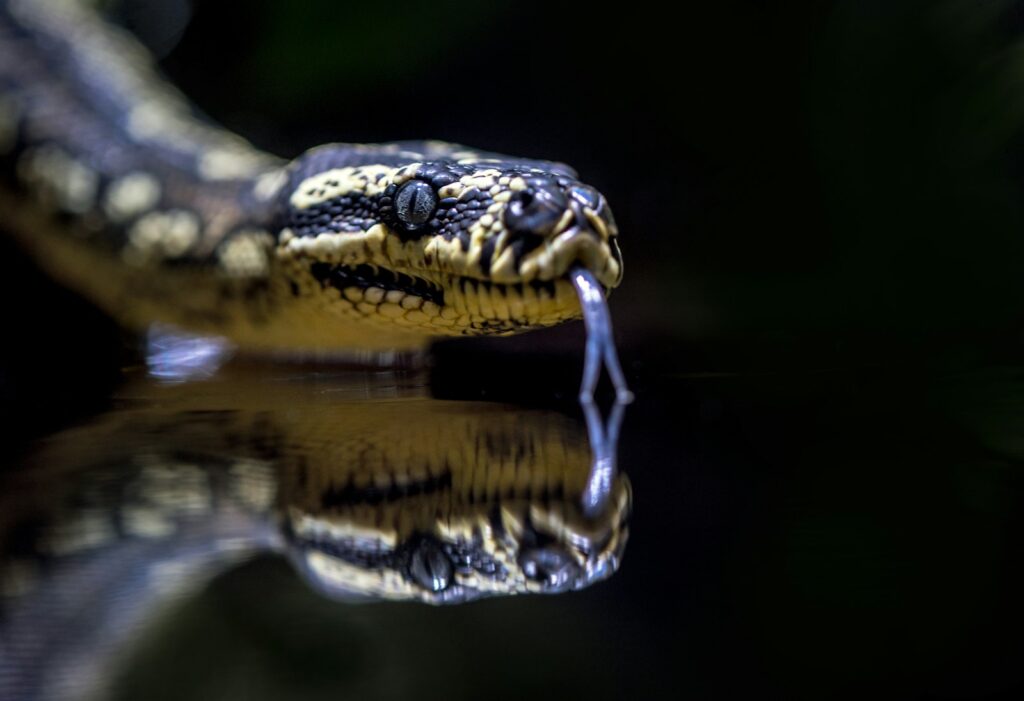
The physical action of tongue flicking is more complex than the casual observer might suspect, involving coordinated muscular contractions and precise neural control. High-speed photography reveals that a complete tongue flick cycle occurs in fractions of a second and consists of several distinct phases: extension, spreading of the fork, sampling movements, retraction, and insertion into the vomeronasal organ. The tongue contains specialized muscle fibers that allow for the remarkable extension and precise directional control snakes demonstrate. Neurological studies show that a significant portion of a snake’s brain is dedicated to processing information from the vomeronasal system, highlighting its importance. Recent research using sophisticated imaging techniques has shown that the surface of the tongue contains microscopic structures that maximize its chemical collection efficiency, including tiny pits and grooves that increase surface area and help trap chemical particles.
Common Misconceptions About Snake Tongues

Despite their familiarity in popular culture, snake tongues are surrounded by numerous misconceptions. Perhaps the most common is the belief that snakes use their tongues to “sting” or inject venom, which is completely false—venom is delivered through specialized fangs, not the tongue. Another widespread misconception is that snake tongues are slimy, when in fact they’re dry and covered with a thin layer of keratin similar to human fingernails. Many people also incorrectly believe snakes primarily taste with their tongues, but as mentioned earlier, snake tongues contain no taste buds. The flicking motion is often misinterpreted as aggressive behavior when it’s just the snake gathering information about its surroundings. Understanding these facts helps dispel unwarranted fears and fosters greater appreciation for these remarkable reptiles.
Scientific Research and New Discoveries
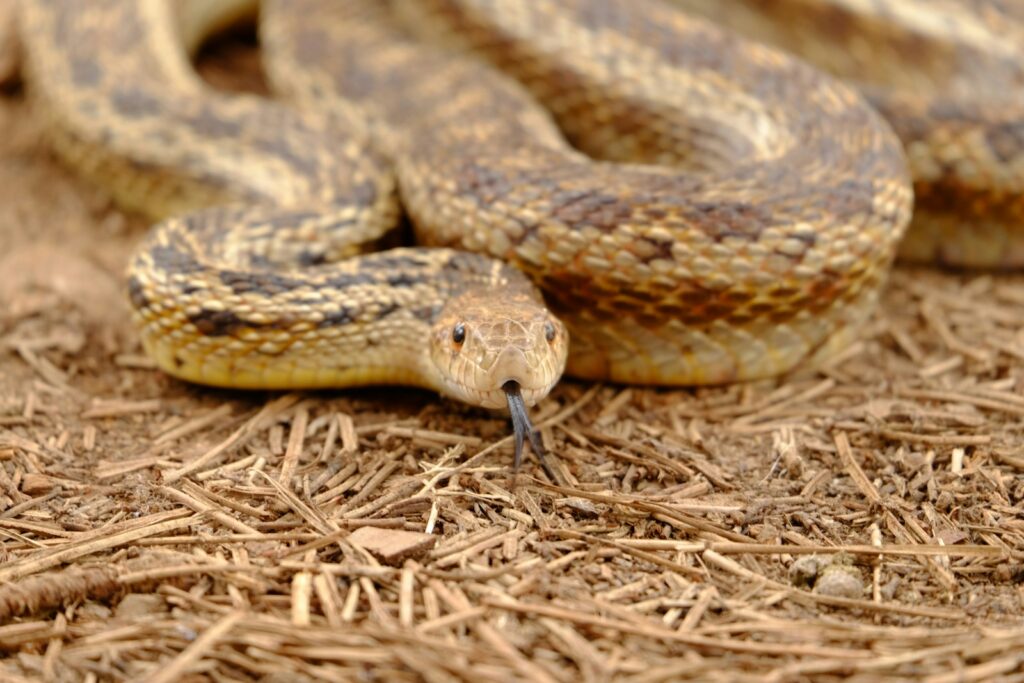
Modern scientific techniques have revolutionized our understanding of snake tongues in recent decades. Researchers using electron microscopy have discovered intricate microstructures on the tongue surface that enhance particle collection, including tiny ridges and channels that weren’t visible with earlier technology. Neurobiologists studying the snake brain have mapped the complex neural pathways that process vomeronasal information, revealing sophisticated filtering mechanisms that help snakes focus on relevant chemical signals while ignoring background “noise.” Comparative genomics has identified genes specifically associated with vomeronasal receptor proteins, showing how molecular evolution has shaped this sensory system over millions of years. Some of the most exciting recent research involves thermal imaging and high-speed videography, which have revealed that some snakes can modulate their tongue temperature during flicking, potentially enhancing chemical detection in different environmental conditions.
The snake’s forked tongue represents one of nature’s most elegant sensory adaptations, a sophisticated chemical collection system that has been refined through millions of years of evolution. This seemingly simple organ allows snakes to build detailed chemical maps of their surroundings, track prey with astonishing precision, locate mates, and avoid predators—all without the benefit of limbs or highly developed vision. The partnership between the forked tongue and the vomeronasal organ demonstrates how specialized adaptations can provide remarkable capabilities, allowing snakes to thrive in diverse environments across the globe. Understanding this adaptation not only enhances our appreciation of snake biology but also inspires biomimetic technologies and sensors that might one day harness similar principles. In the snake’s forked tongue, we find yet another example of how evolution has produced solutions to biological challenges that continue to fascinate and inspire scientific investigation.

